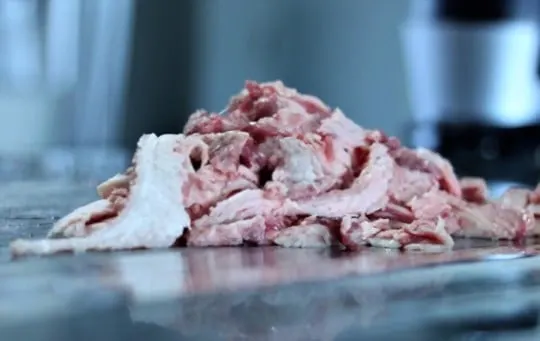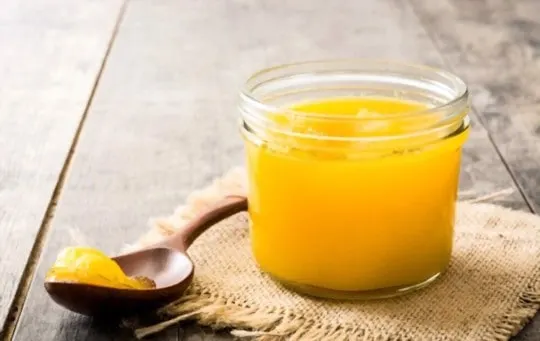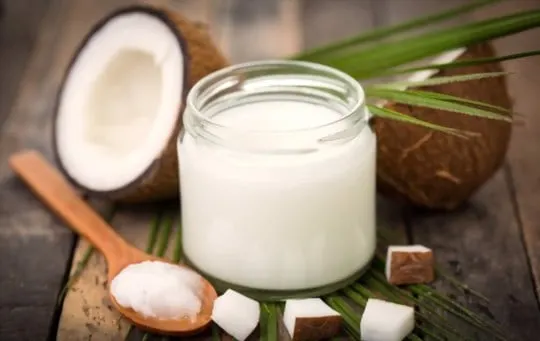Getting creative in the kitchen is our jam, especially when we’re swapping out ingredients to keep things fresh.
Beef tallow might not be on everybody’s grocery list, but that doesn’t mean you have to compromise on flavor or texture in your favorite recipes.
We’ve all been there: ready to cook, only to realize we’re missing a key ingredient. It’s like wanting to hit play on your favorite playlist but finding out your headphones are missing.
The good news? There are some amazing substitutes for beef tallow that will keep your dishes delicious and your kitchen adventures exciting.
What is Beef Tallow?

Beef tallow is saturated fat, which has a high melting point.
This also makes beef tallow perfect for cooking oil.
Beef tallow has a distinctive flavor, which is why it’s mainly used in cooking to add flavor to stews and vegetables.
It’s also frequently used in the production of shortening and soap.
Despite having a distinctive odor, beef tallow is quite bland on its own.
It’s typically mixed with ingredients that stand out more than the tallow itself.
That said, not all products that contain beef tallow can be classified as edible.
Items like candles may use beef tallow as a primary ingredient, but that doesn’t mean they will be edible.
Beef tallow may have different names depending on where you are in the world.
In Australia, it’s referred to as dripping.
For UK residents, it’s known as beef fat or simply tallow.
It can also be called lard if rendered from pigs instead of cows.
The 5 Best Substitutes for Beef Tallow
If you have an allergy or are simply trying to reduce the amount of animal fat in your diet, you might be wondering what the best substitute is for beef tallow.
Here’s a detailed comparison of the key characteristics and proper ratios for substituting beef tallow with five different alternatives: lard, beef suet, ghee, coconut oil, and palm oil:
| Characteristic | Lard | Beef Suet | Ghee | Coconut Oil | Palm Oil |
|---|---|---|---|---|---|
| Texture | Solid at room temperature, similar to beef tallow | Solid at room temperature, similar to beef tallow | Semi-solid at room temperature | Solid at room temperature | Solid at room temperature |
| Flavor | Porky and slightly savory | Beefy and slightly savory | Nutty and buttery | Mild coconut flavor | Mild flavor |
| Availability | Commonly available in most grocery stores | May require a butcher or specialty store | Readily available in many stores | Widely available | Widely available |
| Proper Ratio | Equal substitution for most recipes | Equal substitution for most recipes | Equal substitution for most recipes | Equal substitution for most recipes | Equal substitution for most recipes |
Let’s explore more details for each substitute:
1 – Lard

Lard is rendered fat from pigs.
It can be used as a substitute for beef tallow and comes with the same cooking properties.
There are some minor differences, of course.
For example, lard’s flavor is more neutral than beef tallow’s distinct flavor, so you’ll likely notice a difference in taste when you use it as a substitute.
There’s a reason why lard is the most popular choice for cooking in Mexico, Poland, France, and Germany.
In addition, it’s a favorite in the Southern United States as well.
The main reason for this is that lard can fry with better results than butter or olive oil.
It has a very high smoking point and can stand up to heat without burning as quickly as other oils.
In addition, lard contains no flavor, so its flavor won’t affect the taste of your food.
2 – Beef Suet

Suet is another alternative to beef tallow. However, suet can be made from beef and lamb.
If you would like to substitute beef tallow with suet, you should know that the two are very similar.
They are both hard fats with a high melting point.
Because of its bland taste, suet is typically used when frying items to avoid making them overly sweet or salty.
However, it does contain small traces of flavor and can be quite greasy.
So, please don’t use it when you want to add more flavor to your dish.
3 – Ghee

Ghee is another cooking fat you can use in place of beef tallow.
If you prefer, you can substitute beef tallow with ghee instead.
The two are very similar in taste and have the same consistency when chilled.
Some people prefer making their ghee because it’s difficult to find commercial varieties that come from grass-fed cattle.
Regardless, this is a good alternative for those who don’t like the taste of butter but would prefer not to use something like coconut oil.
Beef tallow and ghee can be used interchangeably in most recipes that require cooking fat, so you won’t have to worry about making any adjustments when substituting one for the other.
4 – Coconut Oil

If you would rather not use any animal fat, coconut oil is surprisingly good for cooking.
Coconut oil has a lower smoking point than animal fats, but it’s still high enough that you can cook with it without worrying about ingesting harmful substances.
Coconut oil is also incredibly healthy.
It contains medium-chain triglycerides (MCTs), which can help boost your energy, metabolism, and immune system.
In addition to all of these benefits, coconut oil has a distinct flavor of its own.
It gives off a slightly sweet taste that some people prefer over beef tallow’s more pronounced flavor.
5 – Palm Oil

Palm oil is another option for vegetarians or people trying to cut down on their intake of animal fat.
You might be surprised to know that palm oil has one of the highest smoking points among cooking oils.
Palm oil is very similar to beef tallow when it comes to flavor.
It has a slightly nutty taste that you might like if you’re accustomed to using animal fats when cooking.
As with ghee, commercial products are usually made from grass-fed cattle, so there’s no need to worry about ingesting harmful chemicals.
Palm oil isn’t as healthy as coconut oil, but it’s still much better than other types of cooking oil.
And like any animal fat, it can be used interchangeably with beef tallow.
Conclusion
Beef tallow is one of the most popular cooking fats.
However, it doesn’t suit everyone’s dietary needs or preferences.
Luckily, many alternatives can be used as beef tallow substitutes.
Based on your cooking needs and preferences, you might find one of the following fats as a better alternative: lard, beef suet, ghee, coconut oil, or palm oil.
They have similar properties to beef tallow and can be used in most recipes that require cooking fat.
Regardless of your choice, you’ll have a healthy and delicious meal.
So, don’t be afraid to experiment with new ingredients.

The 5 Best Substitutes for Beef Tallow
Ingredients
- Lard
- Beef Suet
- Ghee
- Coconut Oil
- Palm Oil
Instructions
- Pick your favorite substitute from the list above.
- Follow cooking directions for your selected substitute with the proper ratio of ingredients.

Andrew Gray is a seasoned food writer and blogger with a wealth of experience in the restaurant and catering industries. With a passion for all things delicious, Andrew has honed his culinary expertise through his work as a personal chef and caterer.
His love for food led him to venture into food writing, where he has contributed to various online publications, sharing his knowledge and insights on the culinary world. As the proud owner of AmericasRestaurant.com, Andrew covers a wide range of topics, including recipes, restaurant reviews, product recommendations, and culinary tips.
Through his website, he aims to inspire and educate fellow food enthusiasts, offering a comprehensive resource for all things food-related.

Leave a comment